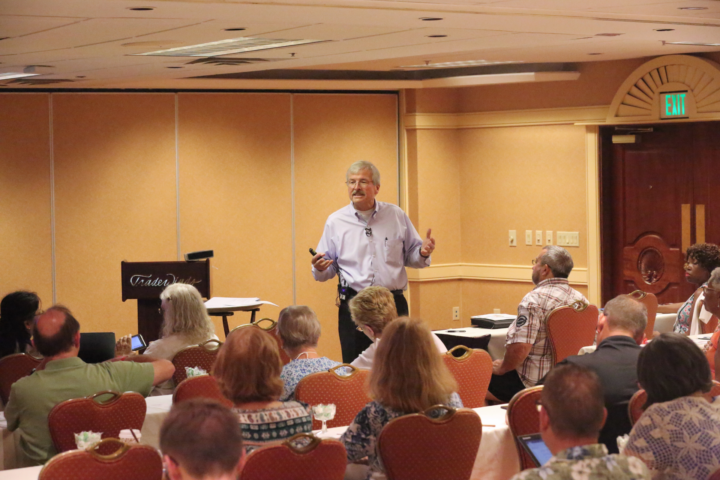9/26/2018
Let your budget speak your vision
by Robyn Davis Sekula

Who are you? Where are you going? What do you have to declare?
Those are three questions you’re asked when you enter the U.S., and they’re also good questions for churches to answer as they determine their core values and vision, says Rob Hagan, ministry relations officer for the Presbyterian Foundation. Hagan, who serves the Northwest Region, spoke on the topic of “Let Your Budget Be Your Vision” at Stewardship Kaleidoscope on Tuesday, Sept. 25. Stewardship Kaleidoscope is an annual stewardship conference designed for pastors and church leaders to study and discuss stewardship, giving and generosity in depth. Presbyterian and Lutheran organizations sponsored this year’s conference.
Hagan sees the church’s budget as a spiritual document. “The budget needs to be the most theological document you have next to the Bible and the Book of Confessions,” Hagan says.
 Rev. Dr. Rob Hagan
Rev. Dr. Rob HaganClear vision
“People give to people, and people give to vision,” Hagan says. That’s why articulating the church’s vision comes first. The vision serves as the church’s roadmap to the future. If you don’t know where you are going, you will never get there. To help align the vision with the Church’s mission and core values, Hagan offered questions the session should ask the congregation:
- Is our congregation’s approach to stewardship stuck in a rut?
- What do you know about our mission, vision and work?
- How well do you know our programs? Which ones? How did that come about?
- Are there any questions about our mission and work priorities that we’ve not answered?
Is your church visionary or stagnant? Hagan says there are four ways to know.
- A visionary church changes lives. A stagnant church meets budget.
- A visionary church challenges the congregation to give to meet the needs of the world. A stagnant church pushes people to give out of guilt.
- In a visionary church, giving changes the giver. In a stagnant church, giving balances the budget.
- In a visionary church, offering is a high moment. In a stagnant church, offering is a time-out.
Narrative versus line-item budget
The budget is the execution of the vision, Hagan says. He showed the audience examples of narrative and line-item budgets, and explained the difference. A line item budget is an accounting tool and usually presented in a spreadsheet format, with each item listed. Bills the church pays on a regular basis such as the electric bill would be listed, along with salaries for workers and paper to print the church bulletin. It’s dry and factual, and doesn’t motivate support, Hagan says.
The narrative budget is a visioning tool. The functions of the church, such as worship, mission, youth programs, education, into separate categories. A narrative budget shows the positive impact of the church. It inspires and helps congregations see how their gifts are making a difference.
Hagan cautions the audience not to get caught up in being to-the-penny accurate, but to make educated guesses to explain how the budget is spent. A pastor’s salary, for example, might be divided up into portions depending how they spend their time. About 30 percent might go to worship.
Narrative budgets should include descriptive stories and photos that help the congregation to envision how staff spends their time. Hagan also encourages the congregation to calculate how many volunteer hours are put into a Sunday morning worship service, and helps illustrate how much time and energy goes into making the church operate.
For more information on giving and stewardship for churches, please visit the Presbyterian Foundation website’s Stewardship Resource Center here. If you’d like to find your church’s Ministry Relations Officer, you can find that here.

